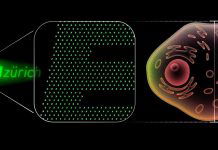
For decades, the computer mouse has been our go-to tool for moving a cursor across a screen.
Despite repeated attempts to replace it with new technologies, most alternatives have struggled to match the mouse’s simplicity and reliability.
But as wearable devices like augmented reality (AR) glasses grow in popularity, the need for new kinds of controls is becoming more pressing.
One promising contender is a lightweight, ring-shaped wireless mouse that could run for over a month on a single charge.
Researchers at the University of Tokyo, led by Project Assistant Professor Ryo Takahashi, have developed “picoRing,” a tiny wearable mouse designed to work with AR and VR devices.
Unlike many so-called smart rings already on the market, picoRing overcomes one of the biggest challenges: power consumption.
Traditional rings often rely on small batteries that drain quickly, lasting only a day or two at best. PicoRing, however, uses hundreds of times less energy, consuming just 30 to 500 microwatts, compared with the 50–60 milliwatt-hours needed by previous devices.
The secret lies in how it communicates.
Standard options like Bluetooth would demand too much power, while NFC, though energy-free on the ring’s side, only works over extremely short distances.
To solve this, Takahashi’s team invented a new communication method called semi-passive inductive telemetry (semi-PIT).
By embedding distributed capacitors into a coil of wire, they were able to amplify magnetic fields naturally, boosting the signal without requiring a power-hungry amplifier.
PicoRing itself weighs just 5 grams, about the same as a small coin. To keep the ring so efficient, it pairs with a wristband that acts like a relay, forwarding information from the ring to AR glasses or other devices.
This setup allows the ring to remain tiny and energy-saving, while the wristband handles the heavier communication tasks.
As a prototype, picoRing has some limitations. It can handle simple actions like scrolling or pressing but isn’t yet capable of recognizing complex hand gestures.
It’s also bulkier than an everyday ring and can experience interference in busy wireless environments. But Takahashi sees huge potential as the technology evolves.
Because rings are in close contact with the skin, picoRing could eventually be adapted for health monitoring, measuring signals such as heart rate or stress. Combined with AR control, this could lead to multifunctional wearable devices that merge computing with wellness.
For now, the device seems best suited for AR and VR, where traditional mice are awkward or unusable.
While office workers editing spreadsheets may still prefer a standard mouse, picoRing offers a glimpse into a future where computing moves beyond the desktop and into the movements of our hands—quietly, discreetly, and with surprising endurance.



